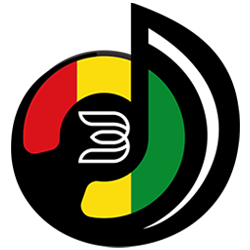Reggae Fashion and Style: Exploring the Iconic Looks
Reggae fashion isn’t just about the clothes you wear; it’s a philosophy, a mindset, a symbol of rebellion and love, and a way to express one’s culture, identity, and heritage. It is closely associated with the music of reggae – a genre born out of Jamaica’s vibrant, colorful, and diverse culture. Today, we will delve into the heart of reggae fashion, exploring its roots, iconic looks, and the influence it holds in the contemporary world.
The Roots of Reggae Fashion
The roots of reggae fashion can be traced back to the 1960s and 70s when reggae music was born. This was a period of social and political upheaval in Jamaica. The local population, mainly the Rastafarian community, used music as an outlet to voice their struggles against the colonial powers and their longing for freedom and equality.
In this backdrop, reggae fashion evolved as a reflection of the music itself. Rastafarian colors (red, green, and gold), Jamaican street styles, and African inspired outfits became the hallmarks of reggae fashion. The fashion was, and still is, an outward expression of the Rastafarian faith and a way to pay homage to their African ancestry.
The Rastafarian Influence
Rastafarian influence is perhaps the most significant and recognizable aspect of reggae fashion. The Rastafari movement, which centers around Afrocentric spirituality and socio-political consciousness, has significantly shaped the way reggae artists and fans dress.
The iconic dreadlocks, a sacred symbol of the Rastafarian faith, is perhaps the most recognizable aspect of this fashion. Originating from biblical teachings, dreadlocks became a form of rebellion against societal norms and an assertion of black pride and identity.
Reggae fashion also popularized the use of Rasta colors: red, green, and gold. Red signifies the blood of martyrs, green represents the verdant land of Africa, and gold signifies the wealth of the African continent. Often, these colors are incorporated into outfits through accessories like headwraps, belts, bracelets, and necklaces, as well as the clothes themselves.
The Jamaican Street Style
While the Rastafarian influence cannot be ignored, reggae fashion also draws heavily from Jamaican street style. This element of reggae fashion is all about comfort and practicality with a unique, eye-catching twist.
Tracksuits, bomber jackets, oversized T-shirts, and baggy pants are staples of this style. Brands like Adidas and Clarks, which have a long history with Jamaican culture, are commonly seen in this subset of reggae fashion. The idea is to be able to move freely, mirroring the free-spirited and vibrant essence of reggae music.
African Inspirations
In respect to their African roots, many reggae artists and fans incorporate African fashion elements into their style. Traditional African clothing items like Dashikis, Kente cloth, and tribal prints have been seamlessly blended into reggae fashion, creating a unique fusion that’s both stylish and symbolic.
Reggae Fashion Icons
Reggae fashion wouldn’t be what it is today without the influencers and musicians who embraced and popularized it. Figures like Bob Marley, Peter Tosh, and Bunny Wailer are pioneers of reggae music and style. Their dreadlocks, Rastafarian colors, and laid-back, natural style have set the standard for what we associate with reggae fashion.
In more recent years, artists like Chronixx, Koffee, and Protoje have continued to carry the torch, blending traditional reggae styles with modern urban influences. Their fashion choices have further evolved reggae fashion, making it relevant and appealing to the younger generation.
Reggae Fashion in the Modern World
In the present day, reggae fashion has transcended beyond its Jamaican roots and is now a global phenomenon. The blend of African aesthetics, Jamaican street style, and Rastafarian symbolism has inspired the international fashion world. Designers and brands across the world have incorporated reggae fashion elements into their collections, bringing this unique style to global runways.
Reggae fashion today is not confined to those who listen to reggae music or follow the Rastafarian faith. It’s become a part of mainstream culture – a fashion statement that represents diversity, rebellion, and a love for life and music.
Conclusion
Reggae fashion is much more than a trend. It’s a testament to a rich cultural history, a socio-political movement, and a symbol of identity and heritage. The vibrant colors, bold patterns, and unique styles reflect the spirit of reggae music. A spirit that celebrates love, unity, and resistance against oppression.
As we continue to embrace reggae fashion in the modern world, it’s essential to remember and honor its roots. It’s a living testament to the Rastafarian faith. The struggles and resilience of the Jamaican people, and the vibrant diversity of African cultures are reflected.
Now that we’ve explored the world of reggae fashion, it’s time for you to play your part.
Every donation, no matter how small, goes a long way in keeping the reggae spirit alive. As Bob Marley once said, “One good thing about music, when it hits you, you feel no pain.” Let’s ensure the music never stops, and the iconic looks of reggae continue to inspire generations to come.

